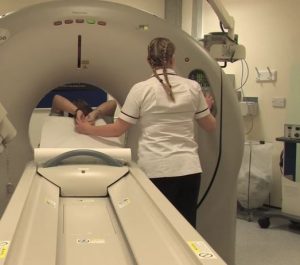
CBS: Certain lifestyle habits — smoking and sun exposure, for example — are known to raise the risk for cancer. But how much you can lower your cancer risk through healthy lifestyle choices is a complicated and controversial question.
Recent research suggests changes going on in the body at a cellular level are the major determinant of whether or not cancer strikes. The risk increases with age, and many cancers seem to be simply an unfortunate matter of chance and random mutations. A new study, though, suggests that lifestyle factors can play a significant role when it comes to cancer prevention.
Researchers from Massachusetts General Hospital and Harvard analyzed data from two large, long-term health studies involving more than 89,000 women and 46,000 men — some considered “low-risk” and some considered “high-risk.”
The low-risk group was made up of people who followed what the study calls a “healthy lifestyle pattern,” defined by these four criteria:
- No smoking, or only smoking briefly in the past
- No or moderate alcohol use (no more than one drink a day for women or two for men)
- At least 75 minutes a week of vigorous aerobic exercise, or 150 minutes of moderate-intensity exercise
- Body mass index (BMI) between 18.5 and 27.5 (normal weight to slightly overweight)
The scientists also used U.S. national cancer statistics to draw associations between lifestyle, cancer incidence, and death risk.
They concluded that approximately 20 to 40 percent of cancer cases and about half of cancer deaths could potentially be prevented if all of the study participants followed the healthy lifestyle habits of the lower risk group.
“I think the real key here is that most cancers are not just a result of bad luck or chance, but in fact, the majority are preventable,” Dr. Graham Colditz, chief of the Division of Public Health Sciences at Washington University School of Medicine in St. Louis, told CBS News. Colditz was recently named to a federal advisory committee for the National Cancer Moonshot Initiative, led by Vice President Joe Biden.
When it comes to certain types of cancers, lifestyle choices can make an even bigger difference. Colditz said estimates were as high as 80 to 90 percent for smoking-related cancers, such as lung and oropharyngeal cancer, and about 60 percent for colorectal cancers.
“This large excess of cancer is not inevitable but rather can be tackled by a broad range of interventions at multiple levels, including strategies at the clinician level, the individual level, the community level, and the society level through regulatory change,” Colditz wrote in an editorial that accompanied the study.
The study authors noted one important limitation to their findings: the research participants were predominately white, so the analysis was based only on white Americans. However, they believe “the observations are potentially applicable to broader segments of the U.S. population,” since the same risk factors for cancer have been seen in other racial and ethnic groups.
While the study makes a strong case for the importance of a healthy lifestyle in preventing cancer, Colditz stressed that less-healthy lifestyles shouldn’t be blamed entirely on individuals and their choices. Community efforts, education, and public policies all play a role in shaping the way we live.
Making neighborhoods more walkable; providing more public health education about screening tests like mammograms, pap smears or colon cancer screenings; improving access to screening; taxing cigarettes; subsidizing fruits and vegetables; and boosting school physical education programs can all go a long way toward preventing cancer, Colditz added.




